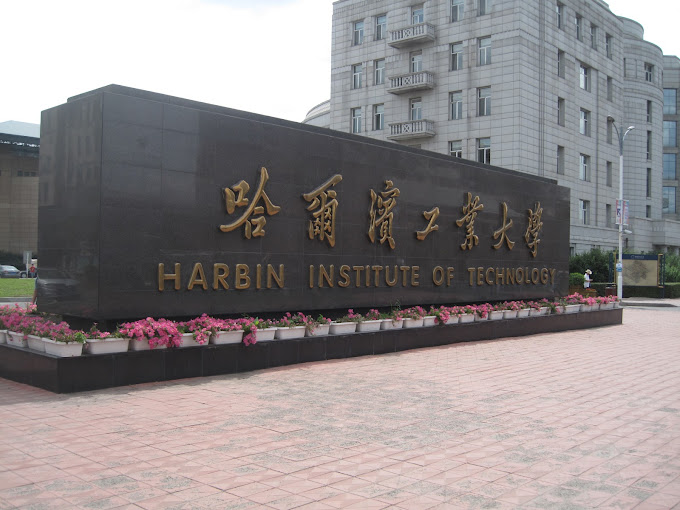92 Xida St, Nangang, Harbin, Heilongjiang 150001, China
Career Counselling

Harbin Institute of Technology is a highly ranked university in China known for its excellence in engineering education. With almost 32,000 full time students, of which almost 2,000 are from outside China, it has been a center of academic and research excellence for over a century.
HIT has three campuses: Harbin, Weihai, and Shenzhen. All these are located in different cities. The main Harbin campus hosts most of the academic buildings, primarily in different fields of engineering. The Weihai campus is home to several cutting-edge research depar...
| Establishment year | 1920 |
| Total Students | 31,873 (full time) |
| International Students | 1,984 |
| QS World University Rankings 2024 | =256 |
| Campus Size | 975 acres |
| Total Number of Campuses | 3 (Harbin, Weihai, Shenzhen) |
| University Website | http://en.hit.edu.cn/ |
| No. of Schools and Divisions | 23 Schools |
| Nobel Prize Winner Alumni | 0 |
| No. of Education Programs | N/A |
| Student to Faculty ratio | 10.6:1 |
Harbin Institute of Technology offers undergraduate and postgraduate courses through 23 schools.
Undergraduate international applications to HIT must satisfy the following requirements:
International applicants to Master’s courses at HIT must satisfy most of the criteria listed above, with the following differences / additions:
Applicants to PhD courses must submit a master’s degree certificate and postgraduate course transcripts.
Filling out the application form on the online application portal for all international students is the first step in the application process. Applicants must fill in all their academic and personal details, and upload the required documents to this portal as per the course that they are interested in. In parallel, scholarship applications must also be completed as per the requirements for each. The fall semester starts in September every year; applications must ordinarily be sent in between January and March of the same year, and decisions are made by the end of July.
Tuition fees for international undergraduate students at Harbin Institute of Technology are RMB 20,000 (USD 2,905) for programs taught in Chinese, and RMB 26,000 (USD 3,776) for courses that are taught in English. UG students also have to pay annual medical insurance fees of RMB 800, and a registration fee of RMB 400.
Tuition fees for international Master’s students at HIT are RMB 28,000 (USD 4,072) for courses that are taught in Chinese, and RMB 34,000 (USD 4,945) for programs where the medium of instruction is English.
Tuition fees for international Doctoral students are RMB 36,000 (USD 5,236) for courses that are taught in Chinese, and RMB 42,000 (USD 6,108) for programs where the medium of instruction is English. Postgraduate students also must pay the one time registration fee of RMB 400.
On average, the housing fee per month is RMB 600, for on-campus accommodation. Other items on which students can expect to spend several hundred RMB per month include food, travel, and personal items.

Harbin Institute of Technology has three locations: Harbin Campus, Weihai Campus, and Shenzhen Graduate School. The main Harbin campus has extensive Soviet influence on its architecture; it is home to most undergraduate and engineering courses, and a majority of the academic buildings. The Weihai campus is home to many high tech departments. The Shenzhen campus hosts a small graduate school in the university area of the city of Shenzhen.
Student clubs, societies, and associations at HIT hold events on campus throughout the academic year. Every December, there is a grand performance by international students; this serves to spread cultural understanding and appreciation among the student body. The Volunteering Service and the International Cultural Carnival are important milestones in student life at HIT. The sports associations at Harbin Institute of Technology have access to world class health, fitness, and sports facilities, with gymnasiums, indoor sports courts, and outdoor sports fields and swimming pools available at each of the three campuses of the university.
The HIT Museum is open to the public and contains many exhibits that inform visitors about the history and cultural heritage of China. The building has great historic architectural value, being built in the European Gothic style.

The Library at HIT is over a century old, with nearly five million paper and online volumes. It gives students access to 136 academic databases, and has a robust organizational structure, with sub-libraries in important disciplines like architecture.
Career readiness is an important facet of student life at HIT. In keeping with the trend of Chinese companies expanding their global footprint, it trains its graduates to excel in a multicultural high tech environment. It runs the One Belt, One Road Think Tank. Through this, it leverages the technical expertise of its students to help developing countries solve their challenges more efficiently. Internship programs at HIT are designed to equip students with cutting-edge scientific and technological skills to solve some of the biggest challenges in the modern world. Finally, there are ten job fairs organized specifically for international students at Harbin Institute of Technology in the spring every year. Some of the largest Chinese firms attend these; which are a great way for overseas students at HIT to secure permanent employment at the end of their undergraduate or postgraduate degree.
The flagship financial assistance mechanism at Harbin Institute of Technology is the Chinese Government Scholarship.
The eligibility criteria for this scholarship are as follows:
The application must be submitted between October of the year prior to program entry and mid-February of the next year. The scholarship application is made directly to the university by sending an email with all application materials to [email protected]. The Admissions Team sends the scholarship decision over email.
The scholarship documents to be submitted are similar to those that are uploaded during the admission process. These documents include:
The Chinese Government Scholarship at Harbin Institute of Technology has the following benefits:
